
[cmamad id=”22784″ align=”center” tabid=”display-desktop” mobid=”display-desktop” stg=””]
Men have been taking this popular supplement for decades, thinking it stops hair loss and prevents prostate cancer… But now new research shows it doesn’t work at all…
—-Important Message—-
Discover shocking prostate truth that doctors aren’t telling men (because doctors just don’t know this)…
I found a certain nutrient used by men 110 or even older – men who NEVER have prostate problems. Ever.
These men never have to worry about waking up multiple times a night to pee… They never have to experience radiation, surgeries, or hormone therapy…
These very old men are using a special cancer-fighting nutrient that reduces prostate inflammation to near zero.
This nutrient lowers harmful estrogen in men and stimulates the Leydig cells into producing more natural testosterone…
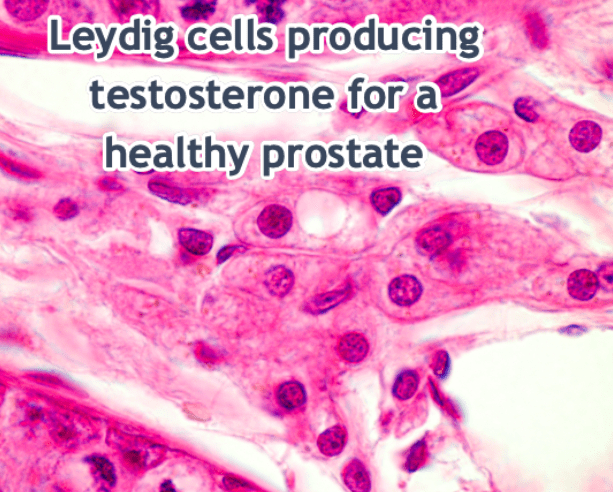
———-
New research says this common male supplement doesn’t work
Saw palmetto was ranked the third leading supplement in 2011, with $18 million in sales.
The justification for its use for prostate hyperplasia/cancer and hair loss had always been its purported ability to “inhibit 5α-reductase” – despite this never occurring in lab tests in vivo.
But people keep using it for hair loss and for cancer.
It is true that saw palmetto inhibits 5α-reductase on isolated enzymes directly.
But there are many good reasons why this wouldn’t even be expected to occur when taken orally.
The molecule that scientists hold accountable for this inhibitory effect is beta-sitosterol, a plant sterol similar in structure to cholesterol.
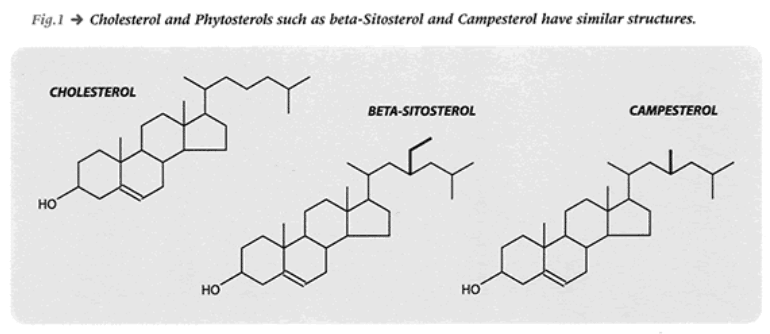
While it’s also true that saw palmetto has beta-sitosterol, the concentrations in commercial tablets are not significant.
The average concentration of six commercial supplements is 1.62 mg/g.
And that’s not too alarming when you consider that wheat bran has a beta-sitosterol concentration of .99 mg/g.
In fact, beta-sitosterol is in nearly every plant food.
The estimated dietary intakes of beta-sitosterol are 140 to 360 mg/day in Finland and 163 mg/day in the United Kingdom.
So we are already accomplishing this assumed “5α-reductase inhibition” through food…
And we’re doing it about three times over what an entire bottle of saw palmetto would deliver.
This is probably why it works in vitro in competition assays, yet is completely ineffective when actual people take the tablets.

This study actually did both: They measured the enzyme inhibition concentration directly – and then they determined DHT concentration in humans given saw palmetto.
They found essentially no change in serum DHT levels after 320 milligrams of a saw palmetto extract… And that’s a more concentrated form with more beta-sitosterol.
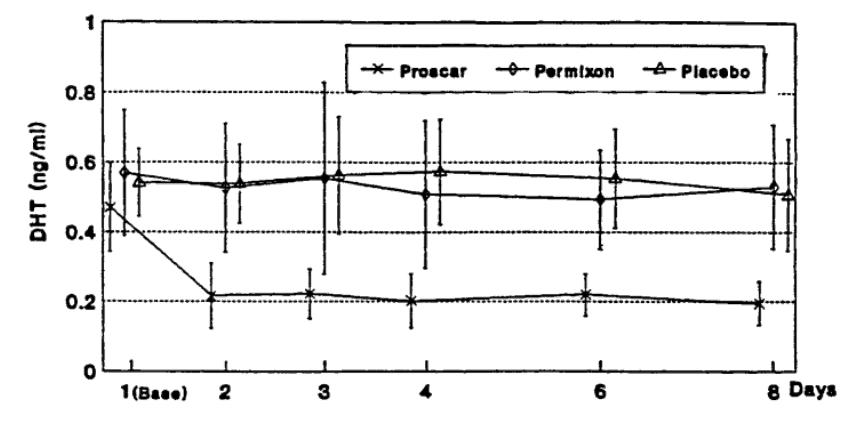
This is the usual finding, and other studies have noticed the same.
“In fact, serum dihydrotestosterone did not decrease, indicating that the inhibition of 5-a reductase is not an important part of the mechanism.”
So if saw palmetto worked at all, these insignificant amounts of beta-sitosterol lowering DHT cannot be the reason.
[cmamad id=”22785″ align=”center” tabid=”display-desktop” mobid=”display-desktop” stg=””]
But it doesn’t actually seem to work at all.
And moreover, beta-sitosterol can actually become dihydrotestosterone (DHT) itself:

The purpose of this study was to determine whether or not beta-sitosterol can become pregnenolone – the precursor to the other steroids, including DHT and testosterone.
They suspected this based on beta-sitosterol’s close similarity to cholesterol, which differs only by an ethyl group on the side chain.
This difference in the side chain matters little to the final product.
All steroids besides vitamin D (a secosteroid) are formed after this side chain has been removed.
The transformation had occurred, which means that this plant sterol can eventually become pregnenolone and then all the other steroids.
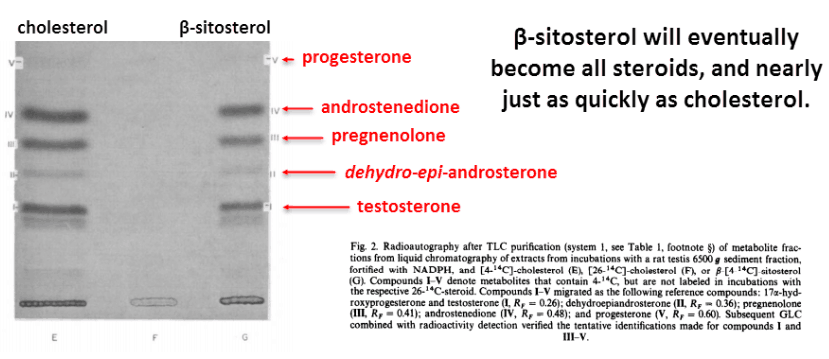
This was not a novel discovery – it was first noted in 1960 by Werbin & Chaikoff.
And many others have reported the same.
“Burstein demonstrated that [beta-sitosterol] was converted to pregnenolone.”
Although beta-sitosterol may be inhibitory on 5α-reductase in vitro, concentrations within the cell will never reach the concentration required…
Beta-sitosterol will instead be converted into downstream steroids, and about as quickly as cholesterol.
Somehow, the popularity of this supplement persists despite these facts.
Saw palmetto is routinely used for hair loss, prostate hyperplasia, and prostate cancer.
A meta-analysis estimated that up to 24.9% of all prostate cancer patients used this supplement…which is apparently no better than placebo:
“The lack of a statistically significant clinical benefit of saw palmetto herbal blend over placebo in our relatively small study groups is not surprising.”
Not only is it useless for the reasons people use it – in so many ways – some of it will become DHT, ironically.
However, prostate hyperplasia/cancer can be overcome using natural approaches, and by using ones that don’t involve androgens.
The reason why DHT increases hyperplasia and cancer is that it is the most powerful androgen…
Dihydrotestosterone increases growth in every cell having its receptor.
This is natural and expected, and it’s why males have a different form of DHT than females.
Although the prostate has more androgen receptors than just about any other organ, this is not why prostate cancer is the most common cancer.
The reason for this is polyamines.
Polyamines are small-molecule growth factors that powerfully stimulate DNA transcription.
Scientists can see this both in cell systems and also during in vitro PCR runs, where only enzymes and nucleic acids are used.
They knew back in the 1960s that polyamines bind strongly to DNA.
More recently, they discovered that polyamines will catalyze the shift from the right-handed B-helix to the left-handed Z-helix.
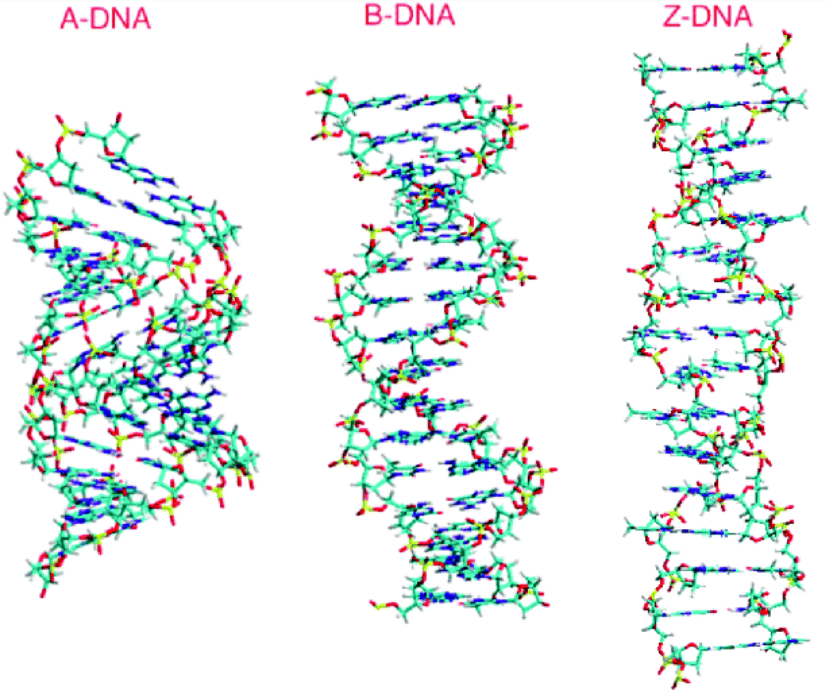
Since polyamines catalyze DNA replication, this must be the “replication helix.”
The specificity is ensured because polyamines do this more powerfully at CpG islands.
These “CpG islands” represent background “housekeeping genes,” areas of DNA that encode for metabolic enzymes.
The prostate synthesizes more polyamines – a constituent of sperm – than any other organ.
Ostensibly, sperm cells need polyamines to catalyze replication inside the egg cell – should they get there.
Androgens create growth by inducing ornithine decarboxylase, the rate-limiting enzyme of polyamine synthesis.
So inhibiting androgens works by inhibiting polyamines and hence replication…
But this can be done much more directly by simply taking selenomethionine, a natural amino acid.
According to more than one study, selenomethionine is very effective at preventing prostate cancer and inhibiting its progression.
A low-methionine diet coupled with selenomethionine will do far more towards helping with cancer than simply reducing androgens…
In addition, reducing androgens is bound to cause impotence…and maybe even gynecomastia (man boobs).
With low methionine, longer polyamines are made from lysine.
Lysine-derived polyamines are more tame, less proliferative, yet can still support the metabolism.
We actually need polyamines, but too many always cause radical and increased growth.
—-Important Message About Hair Growth—-
This natural hair growth secret works better than any other treatment
Forget expensive supplements and chemicals… Now you can grow hair naturally with two simple ingredients found in any supermarket…
This hair growth secret slows down and prevents hair loss while stimulating fresh new hair growth while you sleep.
It’s just a simple mixture that you apply to the scalp before bed, and it oxygenates the hair follicles and improves blood flow…
So when you wake up in the morning, you’ll see visible, fresh hair growth on the top of your head… and fewer strands in the sink or in your comb.
Here’s my natural hair growth secret for men, free to you today.
———-

- Rhodes, L. "Comparison of finasteride (Proscar®), a 5α reductase inhibitor, and various commercial plant extracts in in vitro and in vivo 5α reductase inhibition." The Prostate (1993) https://www.ncbi.nlm.nih.gov/pubmed/8381228
- Aringer, L. "Side-chain cleavage of 4-cholesten-3-one, 5-cholesten-3α-ol, β-sitosterol, and related steroids in endocrine tissues from rat and man." Journal of steroid biochemistry (1979) https://www.sciencedirect.com/science/article/pii/0022473179901961
- Marks, L. "Effects of a saw palmetto herbal blend in men with symptomatic benign prostatic hyperplasia." The Journal of Urology (2000) https://www.ncbi.nlm.nih.gov/pubmed/10751856
- Normen, L. "The phytosterol content of some cereal foods commonly consumed in Sweden and in the Netherlands." Journal of Food Composition and Analysis (2002) https://www.sciencedirect.com/science/article/pii/S0889157502910987
- Penugonda, K. "Fatty acid and phytosterol content of commercial saw palmetto supplements." Nutrients (2013) https://www.ncbi.nlm.nih.gov/pmc/articles/PMC3798925/
- Polyamines in aging and disease - NCBI https://www.ncbi.nlm.nih.gov/pmc/articles/PMC3184975/
- The potential antioxidant and anticancer properties of polyamines and their response to high-intensity ultrasonication https://www.ideals.illinois.edu/handle/2142/99538
